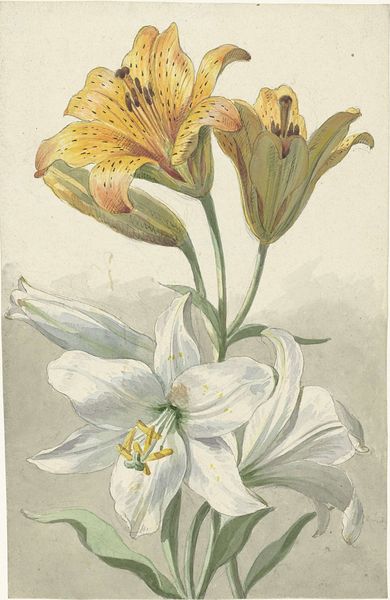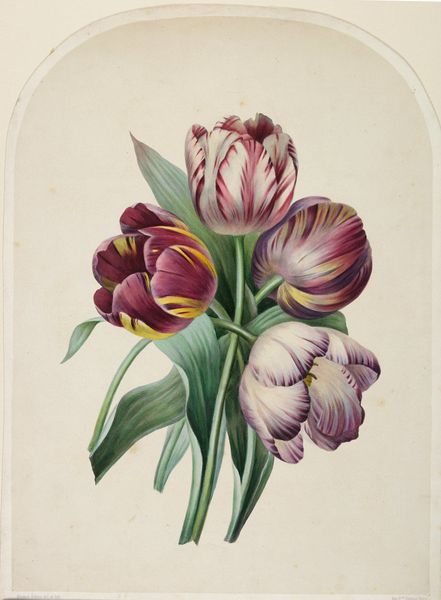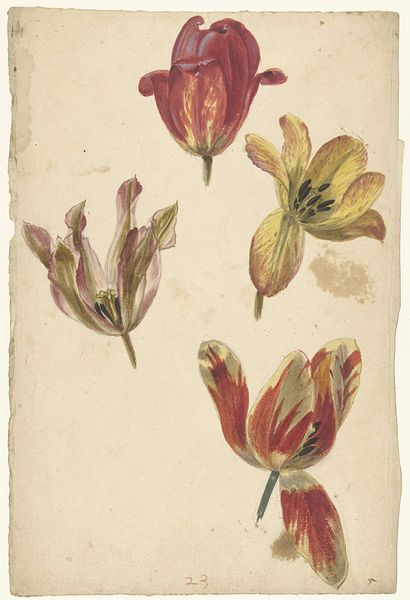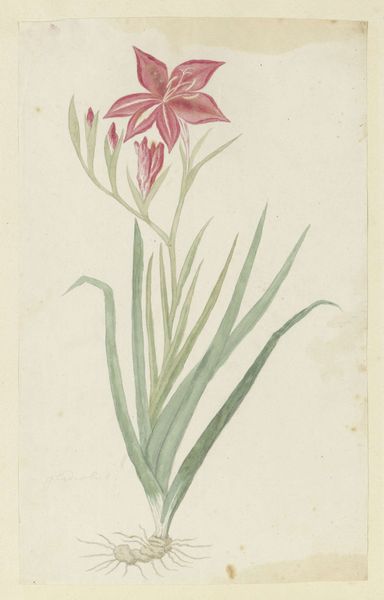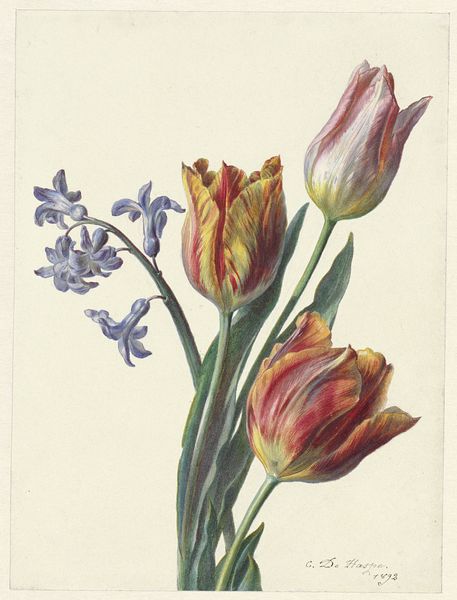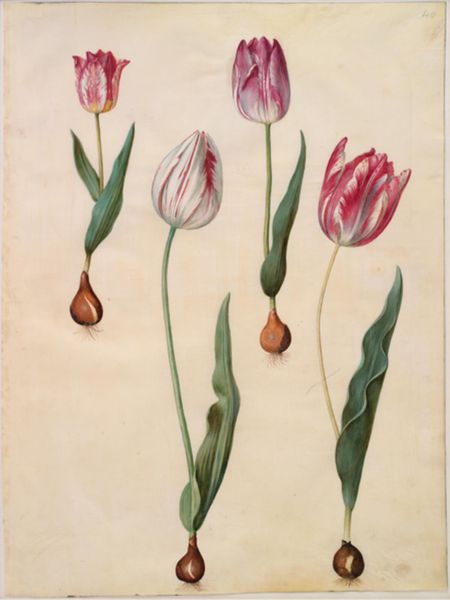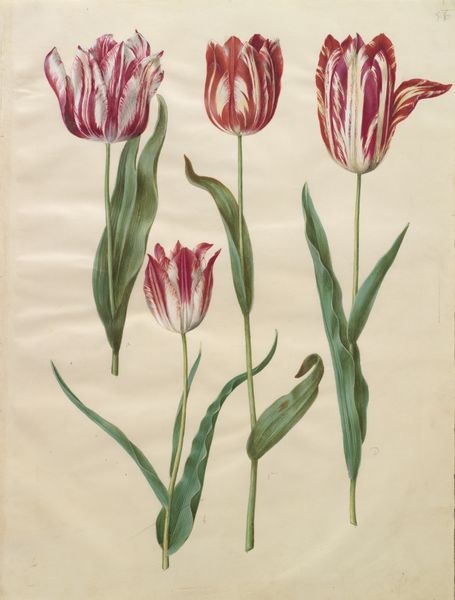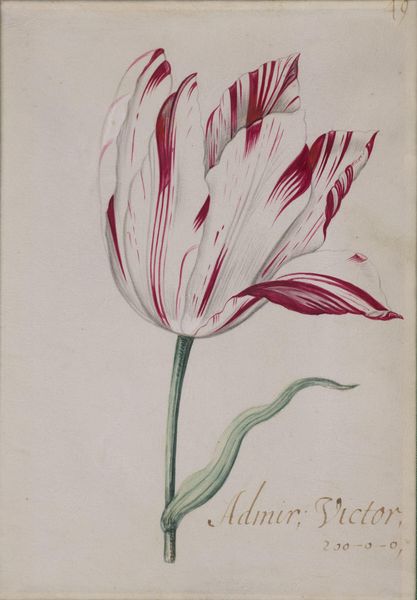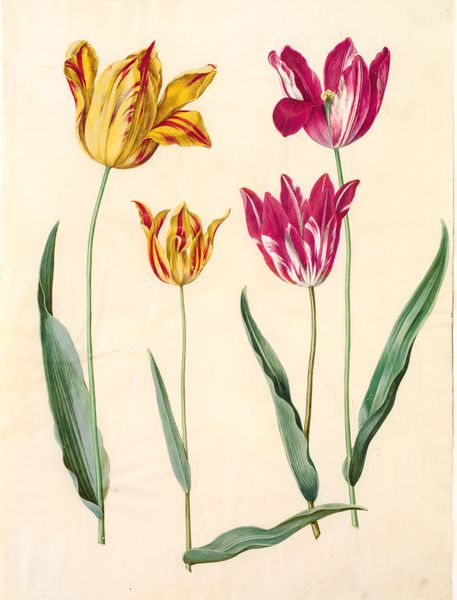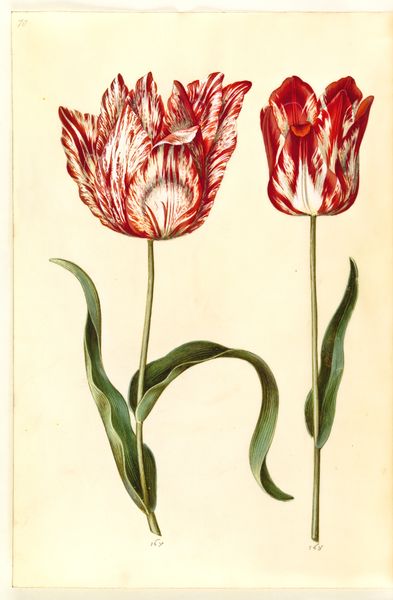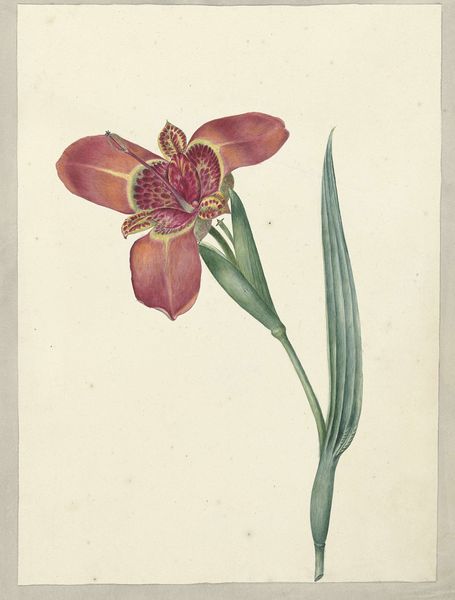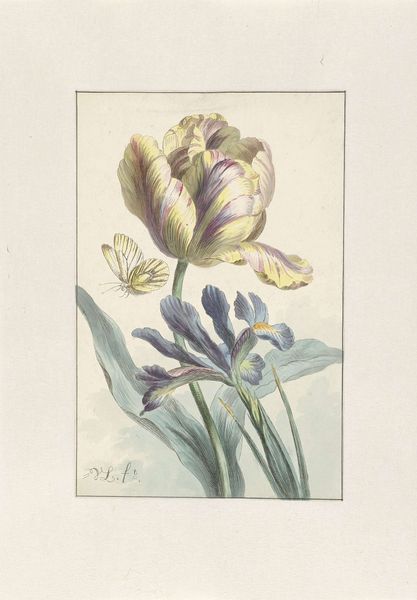
drawing, painting, paper, watercolor
#
drawing
#
painting
#
impressionism
#
landscape
#
paper
#
watercolor
#
watercolour illustration
#
botanical art
Dimensions: height 382 mm, width 267 mm
Copyright: Rijks Museum: Open Domain
Curator: So, here we have "Bouquet of Tulips," a watercolour and drawing on paper attributed to Jan Jacob Goteling Vinnis. It dates from somewhere between 1831 and 1900. Editor: It's a really lovely piece. It feels…delicate. The colours are soft, the lines are gentle. It's not overwhelmingly vibrant; more like a hushed conversation about beauty. Curator: Exactly! It's interesting, though, isn't it? Tulips, on the one hand, are these incredibly popular, almost commonplace flowers, yet there is something quite exquisite here. You get a real sense of someone trying to capture the ephemeral quality of beauty. Think of Dutch tulip mania in the 17th century. Those flowers fueled wild speculation! The tulip wasn't simply a flower; it was enmeshed in capitalism, wealth, desire. This work, from later, does something very different with that narrative. Editor: I see your point. But this piece feels almost...innocent by contrast? And perhaps, that contrast is itself a quiet act of rebellion? A deliberate stepping away from those charged meanings. Also, there’s something subtly subversive, at least to me, in the imperfections. Look at the subtle variations in colour and how it embraces a slightly faded palette. It’s an appeal to reality. Curator: Perhaps Vinnis’ work gestures to how even the simplest things hold echoes of our past anxieties, of economic power structures and shifting desires. A silent bloom, saying, “I know what I represent, and I choose something different.” It's intriguing how a simple watercolour can hold so many complex layers, right? Editor: Definitely. And the flowers themselves are presented almost as individuals with distinct characters. Not as mere decoration. In a way, that lends them power – reclaiming their representation outside of commodity. This has definitely given me more to consider about the still life form in relation to broader socio-political forces! Curator: Precisely. Looking again I think that maybe what is lovely here is its quiet, its humility – it manages to evoke a much grander context and at the same time create an oasis.
Comments
No comments
Be the first to comment and join the conversation on the ultimate creative platform.
